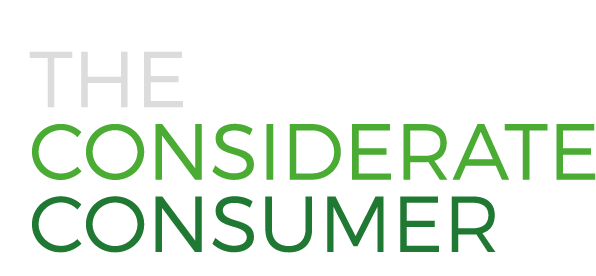February 2020
Almost all of us use beauty products. However, these affect animal welfare, the environment, and our health. Here are some tips to consider when shopping for personal care products to transition your cosmetics cabinet into a genuinely sustainable treasure box.
BEFORE SHOPPING FOR PERSONAL CARE PRODUCTS
Impulse buying often entails extra waste. Avoid doing it and opt for the following instead:
Consulting product & shopping guides, such as ToxFox, and stay informed about the market.
Buying as needed: use the products you have before they expire rather than spending more on multiple similarities.
Suiting products to your skin type and condition: know which products you can’t use before buying them with samples or testing stations in shops. This can allow you to test the cosmetic product before purchasing the right cosmetics in bulk.
Buying online is an excellent way to buy directly from brands completely dedicated to sustainable production. However, this can be country-dependent – search the internet for options that serve you.
CERTIFIED NATURAL COSMETICS
Many cosmetics use unsustainable raw ingredients and harmful substances and are tested on animals. Products classed as ‘natural cosmetics’ present a sustainable alternative.
These are made without the practices mentioned above and avoid using microplastics. Producers instead opt for organic ingredients and promote the farming thereof.
The term itself is not legally regulated, so look for certifications that identify sustainable products.
Demeter, ICADA and NATRUE are some examples of transnational organisations certifying cosmetics according to various criteria. National organisations also exist in many countries. Their respective websites can contain lists of natural cosmetics brands.
Getting certified is costly, which some smaller brands can’t afford. Therefore, a product without such a label does not necessarily mean they aren’t sustainable.
Apps like EWG’s Skin Deep help you rate your products regarding their ingredients' properties and potential negative effects.
Some companies will only produce natural products, and most major pharmacies have developed their sustainable ranges.
Note: Some more prominent cosmetic brands also sell natural ranges, though these tend only to contain the bare minimum of natural ingredients to justify marketable keywords.
SUSTAINABLE COSMETICS PACKAGING
Sustainable packaging is something to consider when buying cosmetics, too, as they often require a lot of plastic, generating vast amounts of waste.
Look out for brands that use recycled materials, glass, metal, paper, or plant-based packaging.
Buy in bulk wherever possible. This avoids having to consume more packaging continuously.
Zero-waste shops sell unpackaged products like shampoo bars, toothpaste tabs and deodorant sticks.
Some cosmetics can even be bought on a refill basis. Some conventional pharmacies have also started to take on such stock – if your local retailer hasn’t yet done so, ask them to!
SUSTAINABLE PERSONAL HYGIENE PRODUCTS
Sanitary products and some personal care products are as disposable as their packaging. Still, some sustainable alternatives do exist and can be found in most regular retailers or certified online shops:
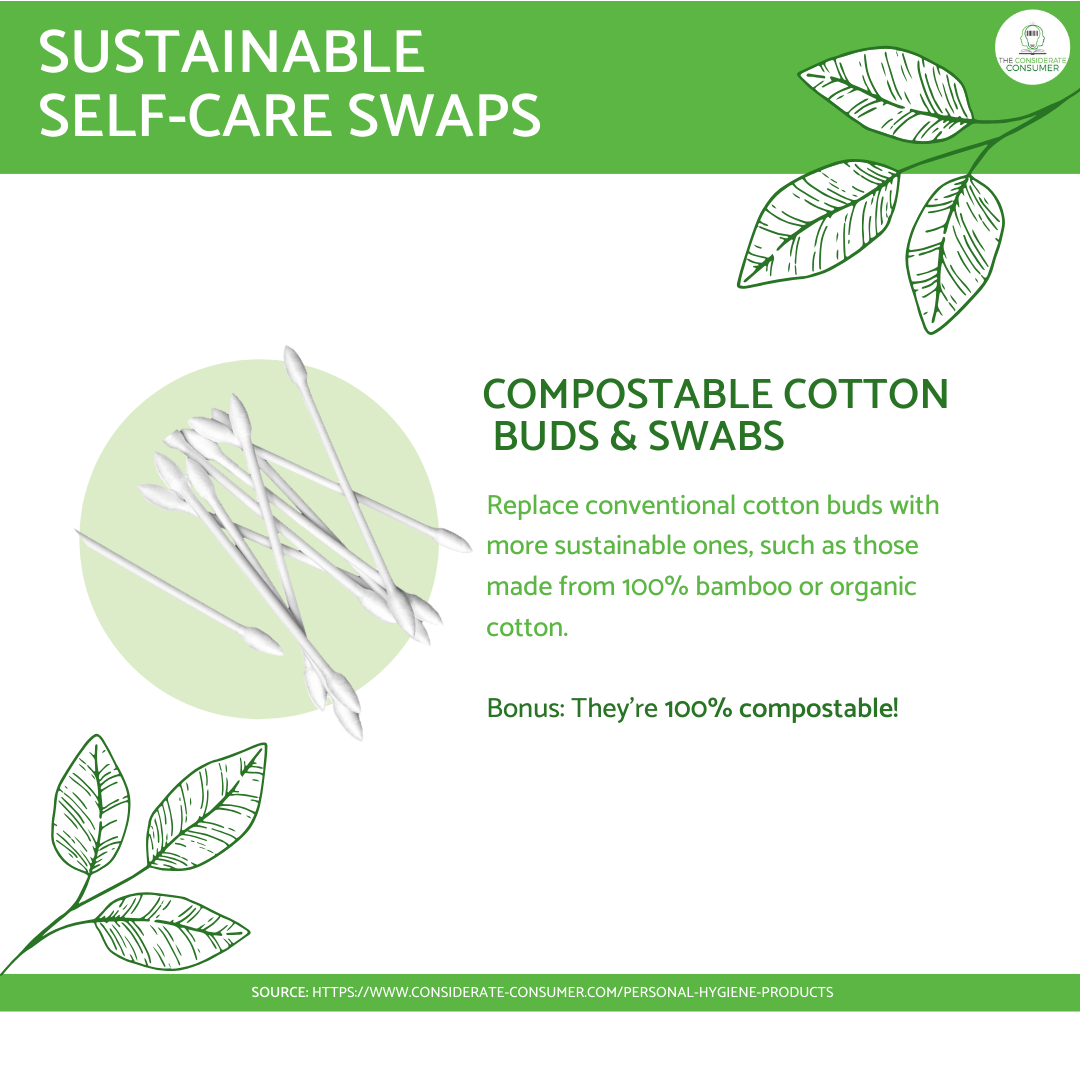
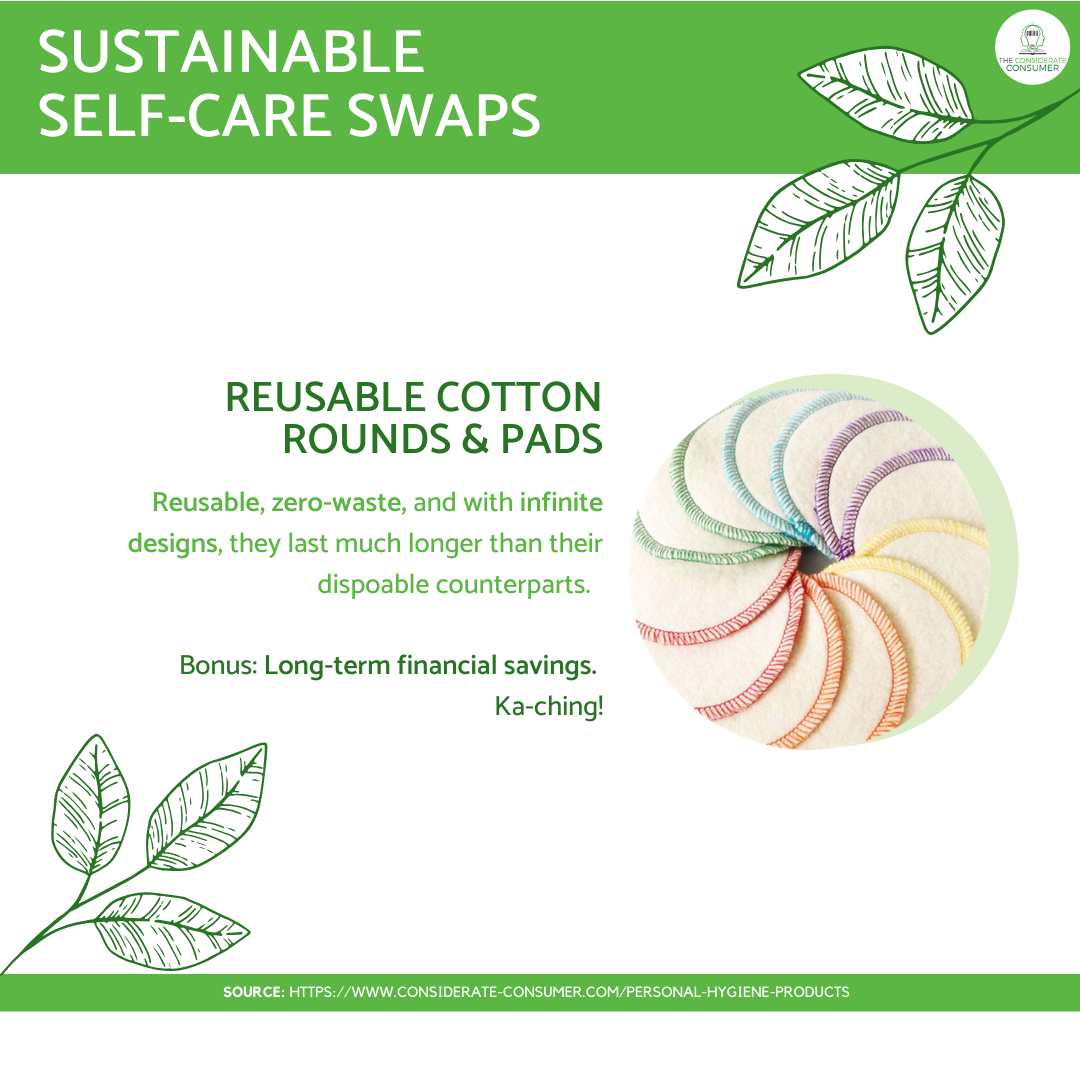
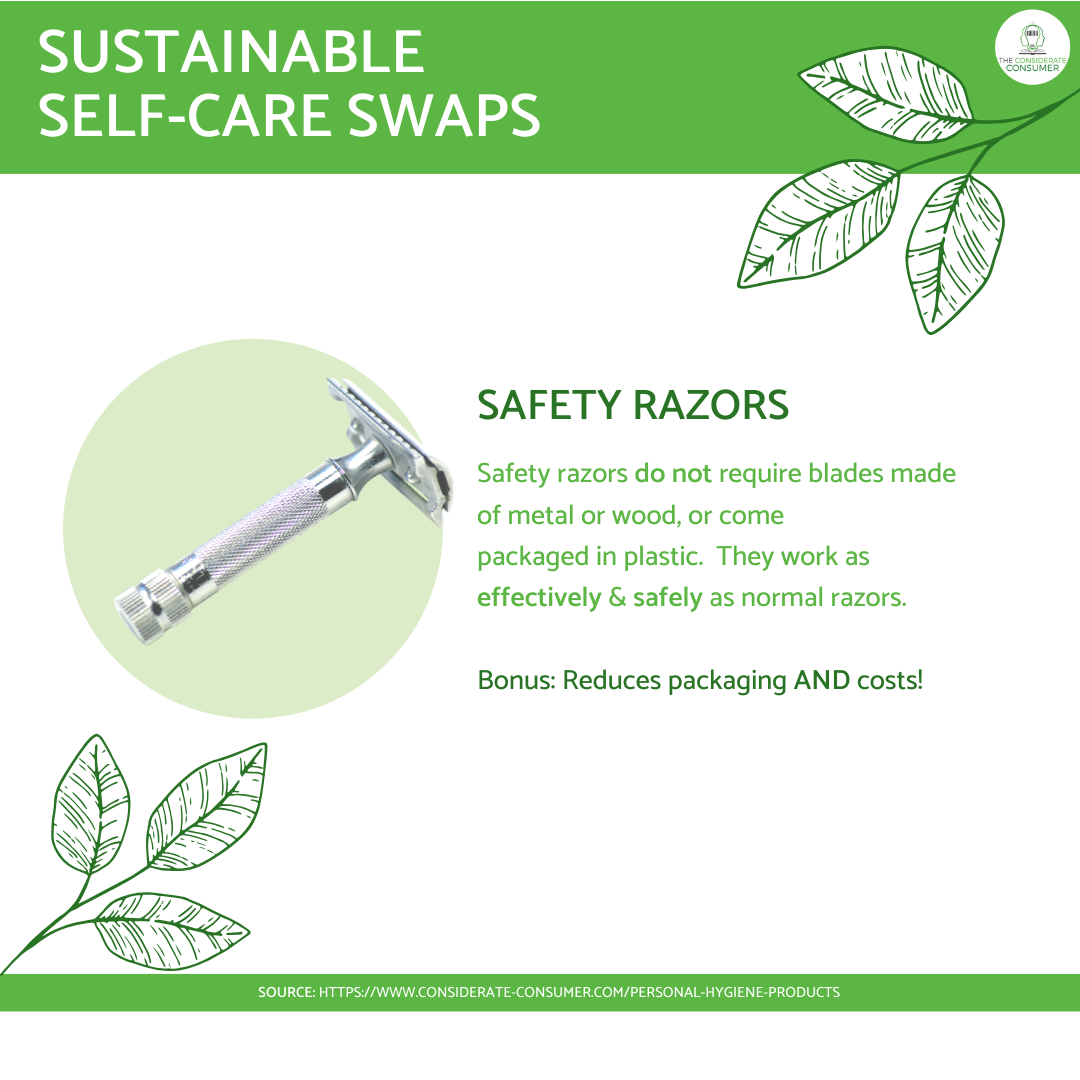
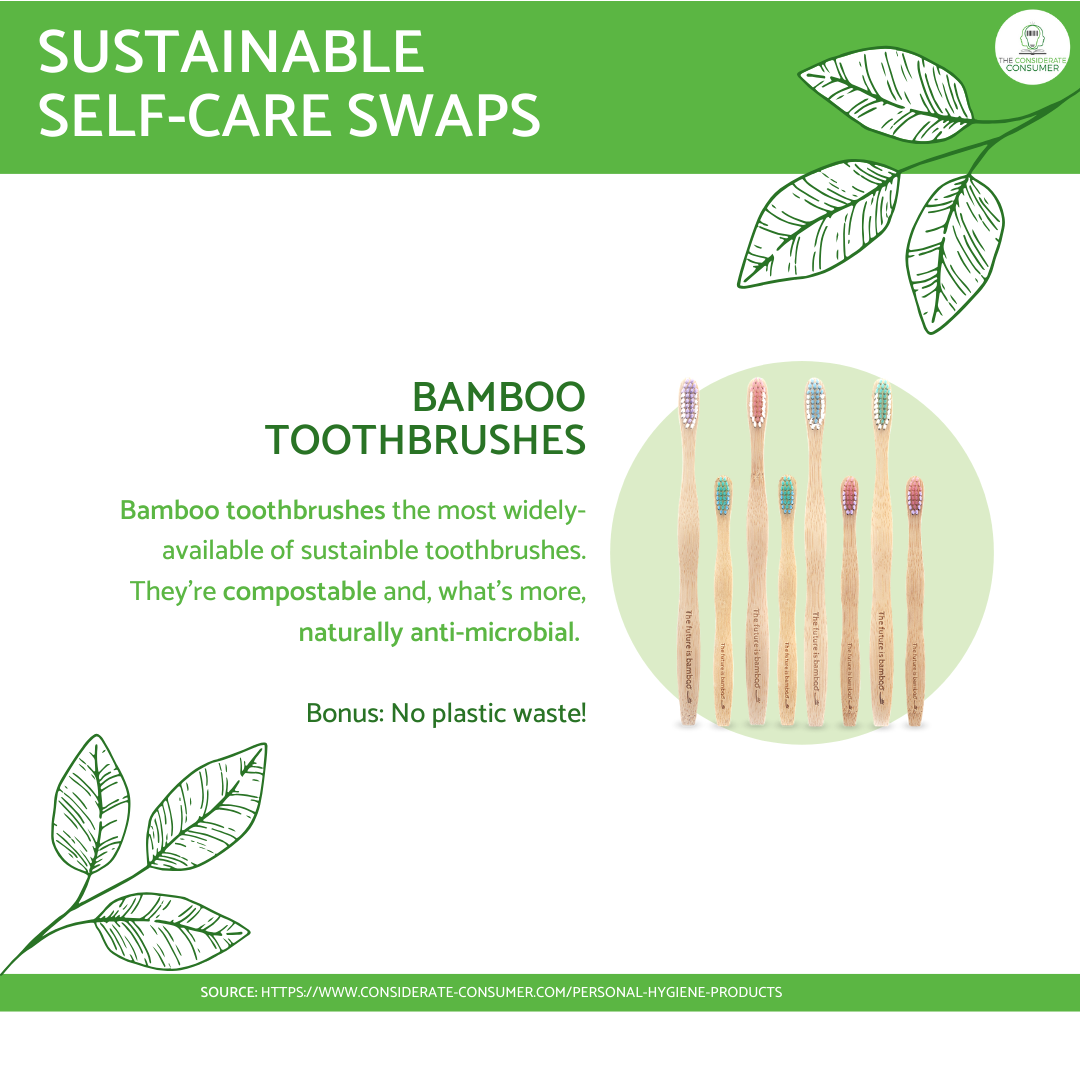
Opt for cotton Buds made from bamboo and organic cotton – these are also compostable.
Products like the ‘LastSwab’ offer a reusable bud.
Cotton pads are also available in a reusable form and can be bought online from brands like Bambaw and EcoMonkey. Otherwise, opt for organic cotton if using single-use pads.
Instead of disposable or cartridge razors, try sustainable safety razors, as these use fewer materials, don’t come packaged in plastic and cost less in the long run.
Tampons and sanitary pads can be replaced with washable and organic cotton alternatives. Plus, opt for menstrual cups or menstruation underwear.
These can take some getting used to, but they are worth it, as they let you avoid the harmful chemicals present in conventional products and the waste and expense thereof. A few online shops ship internationally, like Dear Kate, Luna Pads, and MYLILY.
Sustainable toilet paper can be made from recycled fibres, bamboo, or grass.
A washcloth or bidet can act as alternatives to toilet paper altogether.Avoid plastic toothbrushes with widely available bamboo alternatives; these also use sustainable materials for the bristles.
DIY COSMETICS
DIY cosmetics are a way to sidestep the waste, toxic ingredients and animal testing attached to most shop-bought products. Many books have been published detailing DIY cosmetics and online sources such as blogs, magazines and courses. Making them is just like cooking: follow the recipe and quantities used.
When sourcing ingredients, choose regional and organic whenever possible, and consider their production and transportation processes. Certifications like Fair-trade should also be looked out for.
Bear your skin type in mind and test on small sections to see if you tolerate it. Staying at a pH level of around 5.5 is a good rule of thumb.
Clean all work surfaces and wash your hands before making your cosmetics so bacteria don’t potentially harm their lifespan.
Prepare your containers by boiling them and reusing old containers to reduce waste.
DIY cosmetics can’t be kept for as long as conventional ones since they lack chemical preservatives. Avoid bacteria by always tightly closing the lids.
HANDLING COSMETICS
Sustainable choices also apply after purchase.
Remember to scrape the pot clean! Many cosmetic containers are thrown away with a lot of product left in them.
Products usually last far longer than their expiry dates. Determine this yourself by checking things like smell, colour and consistency.
Often, the bathroom isn’t the best place to store them due to its always fluctuating temperature and humidity. Store your cosmetics in a place that remains cool and dry.
Labels will sometimes instruct you on the disposal of leftovers. Some are hazardous and need to go to your local pollutant collection point, such as nail polish remover.
Discard packaging according to its material. Search the internet for relevant facilities or services available in your area.
LEARN MORE
Check our sources: Bibliography →
